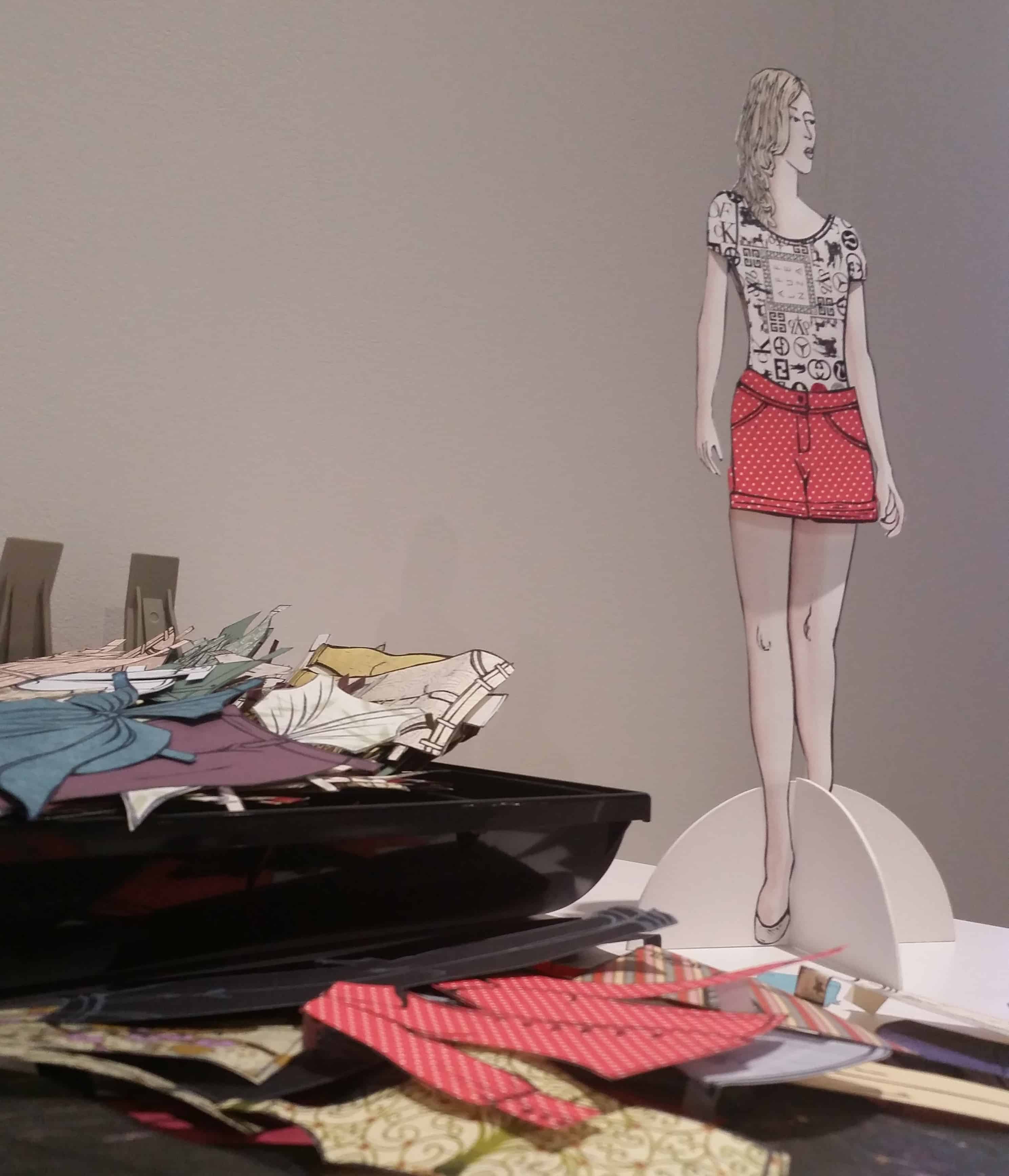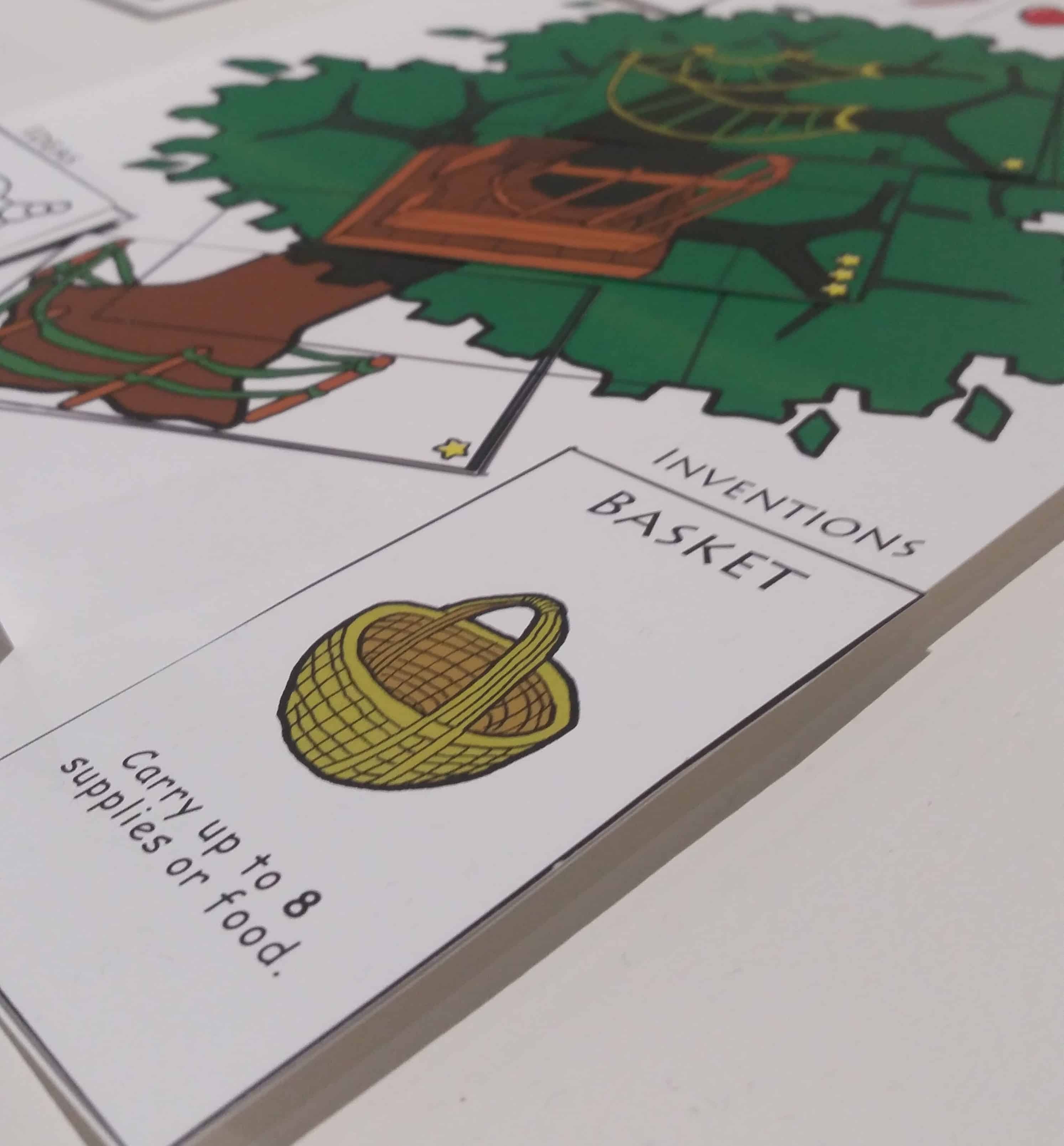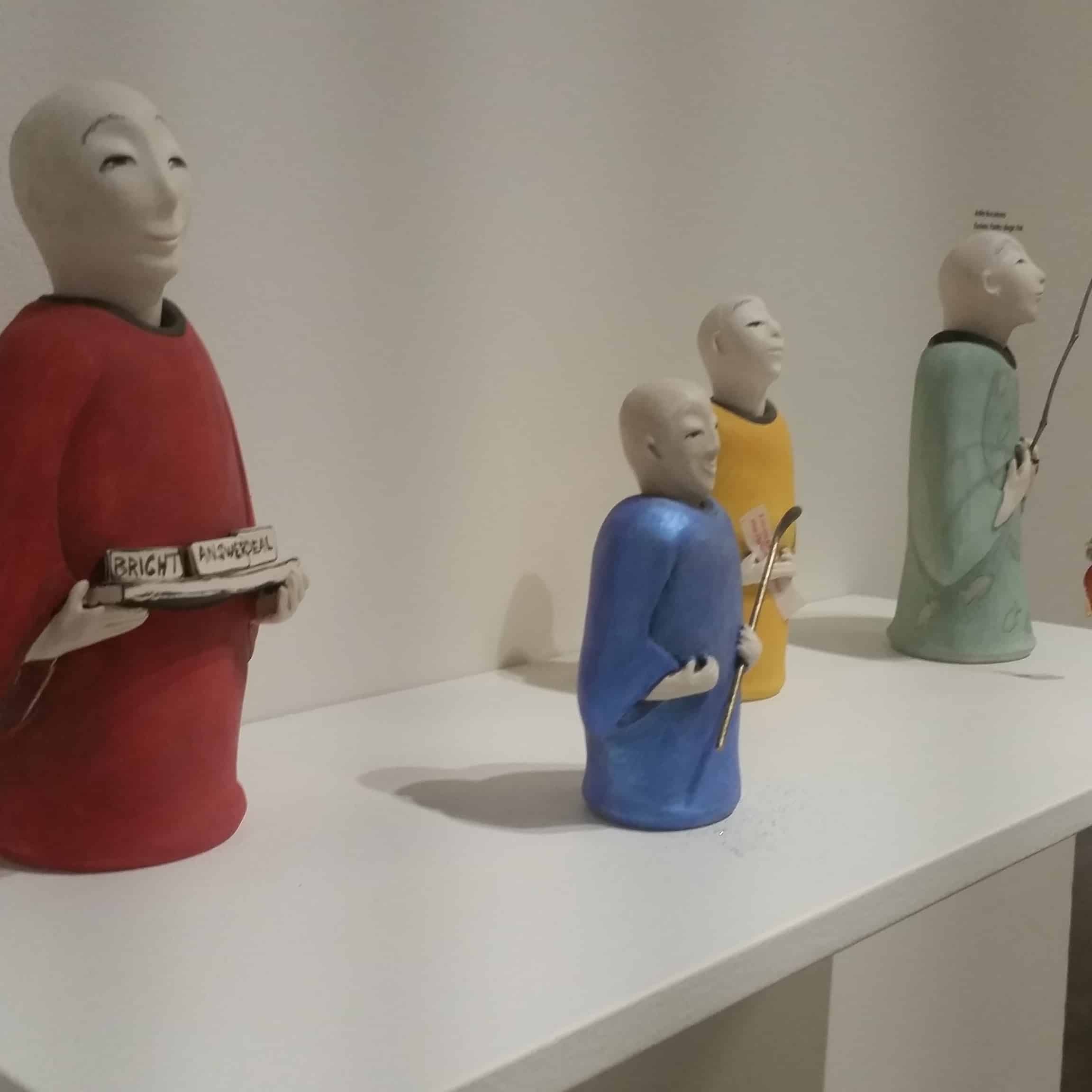Submitted by: Maia Stark, SCC Gallery Assistant
The current show in the gallery, “Imaginary Architects” curated by Stephanie Canning, asks the audience to consider “play” in an exhibit of hand crafted toys and games.
Theories of “play” in the visual arts have been explored by art theorists and philosophers extensively, and there is much heavy discussion around art as object; art as experience; escapism and so on. Some attention focuses on how the action of requesting an audience member to interact with art changes the normative dynamic in a gallery or museum. For example, often we are asked not to touch the artwork displayed– for very good reason, I will add! As a gallery assistant who often needs to press this point to gallery visitors, I certainly understand the desire to touch fibre work, feel the smoothness of woodwork and experience the weight of a clay piece. However, as a gallery we are trusted by the artists to take care of their work and ensure its return in an unaltered state. It’s a case of “If one person does it, everyone will.” For every new person to interact with a delicate piece, the possibility of something happening seems inevitable.

Monique Martin’s linocut installation“Affluenza” endears us to the nostalgia of playing with paper-dolls, as well as drawing attention to the consumerism of fashion clothing and accessories.
For this reason, it is an unsuspected pleasure when one enters a gallery and is told: Oh, you can touch that; go ahead; press that button; pick it up. Not only do we feel that we are breaking a social taboo (exciting in itself), but often such pieces are made with interaction in mind: by playing with a piece, you are affecting it and changing it. In visual art works the audience is asked to participate with eyes and mind: seeing the piece and thinking about it—experiencing aesthetic pleasure or displeasure through colour, style and content. When faced with an interactive piece of artwork we can, some argue, take this participation one level further.

Allan Dotson invites gallery visitors to interact with his board-game, “Treehouse,” encouraging visitors to pick up the game where others have left off.
Considering these topics, I asked Stephanie Canning some questions about her decisions for this show:
Q: This seems a particularly different kind of show- can you place what sparked the idea for a exhibition about handmade toys and games?
A: I played with many handmade toys when I was growing up and I have always been interested in handmade toys. My BFA exhibition was inspired by my childhood dollhouse that was made for me by my grandmother. In recent years, I have seen more and more local artists making toys and I wanted to see what else was out there.
Q: How do notions of “play” associate with Fine Craft for you?
A: I think there are many different notions of play in this exhibition.However, I do think that the nature of the work (predominately production based for many artists), does allow many Fine Craft artists to play and experiment when making new work. For example, Anita Rocamora brought in at least 8 works for me to choose from for this exhibition.
Q: Much has been made of artwork’s ability to interact with audiences not only visually, but physically- asking the audience to interact with art- was this part of your consideration when thinking about a show focused on toys and games?
A: When envisioning the final exhibition it was really important to me that there be opportunities for gallery visitors to interact and play. Considering the theme, it just didn’t seem fair to ask people not to touch. When I was speaking with artists about the show, I made this very clear to them, and as a result we were able to have quite a few works that can be interacted with.

Anita Rocomora’s “Esoteric Pantry: Oracle; Fairy Dust; Good Fortune;” and “Magic Fish.”
Check out “Imaginary Architects” at Affinity Gallery in the Saskatchewan Craft Council, running from December 5th to January 10th 2015, Closing reception Friday January 9th, 7-9PM. Affinity Gallery is located at 813 Broadway Avenue, Saskatoon, Saskatchewan.
